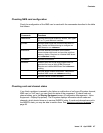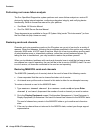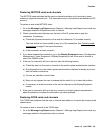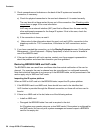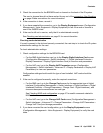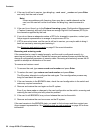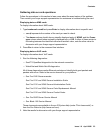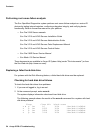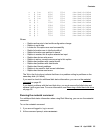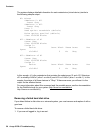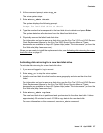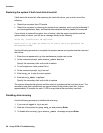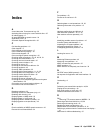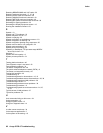Issue 1.0 April 2006 61
Index
A
A word about the Tomcat server log • 36
Activating disk mirroring for a new hard disk drive • 57
All calls dropped • 17
All ports BROKEN on speech server • 24
Application errors • 9
Automatic Speech Recognition fails • 32
C
Call-handling problems • 16
Calls dropped • 17
Calls dropped at initial prompt • 17
Calls not transferred properly • 18
Calls to host dropped • 23
Cannot configure speech recognition • 24
Checking cable connections • 10, 43, 49, 50, 51
Checking card administration • 51
Checking card and channel states • 47
Checking communications • 36
Checking for errors • 27
Checking for hard disk drive failures • 54
Checking hardware • 43
Checking JDBC operations • 35
Checking LAN communications • 11, 31, 36
Checking NMS card configuration • 47, 51
Checking Oracle object size limits • 35
Checking system history • 14
Checking the server connection • 27
Checking the voice response application and system
administration • 26
Connection and communication problems • 9
Connections and communications • 7
D
Database problems • 35
Detecting incorrect IP addresses (arp) • 41
Disabling disk mirroring • 58
Displaying data on NMS cards • 53
Displaying data on VoIP cards • 53
Displaying network statistics (netstat) • 41
Displaying packet route (traceroute) • 42
E
Erratic availability of MRCP speech resources • 30
Execute Unix command failed • 34
F
Fax problems • 20
Fax text or file not found • 22
G
Gathering data on card operations • 52, 53
Gathering information on a problem • 13
H
Hardware malfunctions and failures • 8
Host interaction problems • 16, 17, 22
Host sessions recover repeatedly • 22
I
Identifying possible causes of problems • 10
Incorrect system administration • 8
Inspecting the IR system platform • 50
Interpreting negative fax values • 21
Investigating operations problems • 16
L
Locating fax errors • 21
M
Monitoring Ethernet packets • 40
Monitoring live operations • 14
MRCP connections and protocols • 27
MRCP problems • 27
MRCP servers are frequently out of service • 30
N
No DTMF tones (WINK protocol) • 19
No response for application with host interface • 23
O
Overloading • 9
P
Performing root cause failure analysis • 48, 54
Pinging server connections • 40
Poor audio quality on VoIP calls • 20
Possible malfunctions and errors • 8
R
R2.0
Returning TTS resource state to INSERV • 33
Removing a failed hard disk drive • 55, 56
Removing and restoring cards • 52
Replacing a failed hard disk drive • 54
Requirements for successful operations • 6, 16
Resolving a problem when the monitor does not display •
43
Resources for LAN troubleshooting • 37



